XP-55 Ascender
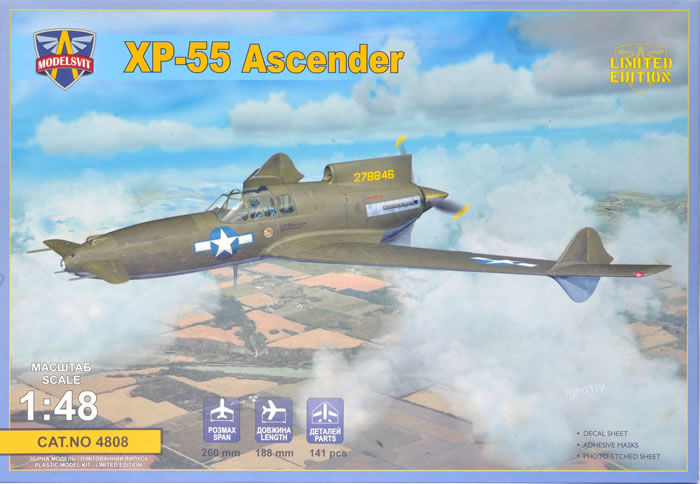
Modelsvit, 1/48 scale
S
u m m a r y |
| Catalogue Number: |
Modelsvit Kit No. 4808 - XP-55 Ascender |
| Scale: |
1/48 |
| Contents and Media: |
88 parts in grey plastic; seven parts in clear plastic; photo-etched fret with 27 parts; decal sheet covering two options for the second and third prototypes; self-adhesive masking sheet for canopy interior/exterior and wheels. |
| Price: |
€28.10 plus shipping available online from Modelsvit
AUD$59.00 plus shipping available online from Creative Models Australia
and retailers wordwide. |
| Review Type: |
FirstLook |
| Advantages: |
Crisply recessed and very fine panel lines; high level of detail; effective use of photo-etched parts; alternative parts for open and closed canopy. |
| Disadvantages: |
Some fine flash will need to be cleaned up; limited run nature means that you should take more time preparing and test fitting. |
| Recommendation: |
Modelsvit has delivered an impressively detailed kit of this very interesting and unusual subject. With care in preparation and test-fitting, this model should be within the skill range of the average modeller. |
Reviewed by Brett Green

Eduard's 1/48 scale Fw 190 A-3 is available online from Squadron.com
To quote the Modelsvit website:
In the late 1930s, the US Army Air Corp announced a tender for aircraft with improved performance, armament, and pilot visibility over existing fighters.
All selected finalists came up with the concept of a push engine. Curtiss-Wright’s concept featured a canard configuration with swept wing.
On 22 June 1940, the Curtiss-Wright company received an Army contract for preliminary engineering data and a powered wind tunnel model. The USAAC was not completely satisfied with the results of these tests, and Curtiss-Wright took it upon itself to build a flying full-scale model, which it designated 24B (or CW24B). The flying model was originally built to a 1:1 scale. After checking the results in June 1942, a contract was issued for the construction of 3 prototypes.
The new fighter received the designation XP-55 "Ascender". It was an all-metal monoplane with a rear-mounted engine, swept wing, and two vertical tails. The Allison V-1710-90 water-cooled engine with take-off power of 1,275 hp was located in the tail section behind the pilot's cabin. The three-bladed propeller had ability to be ejected in an emergency. The air intake above the engine and the radiator below formed a vertical fin.
The first “Ascender” prototype flew on July 13, 1943. Initial testing revealed that the takeoff run was excessively long. To solve this problem, the nose elevator size was increased and the aileron up trim was interconnected with the flaps so that it operated when the flaps were lowered. On November 15, 1943 this plane was destroyed during tests of stall performance.
The second prototype was similar to the first but with a slightly larger nose elevator and modified elevator tabs. It flew for the first time on 9 January 1944. All flight tests were restricted so that the stall zone was avoided.
The third prototype was fitted with four machine guns and aerodynamic improvements. It maiden flight took place on April 25, 1944. Designers determined the crucial disadvantage of the Ascender's configuration - insufficient stability. It crashed on May 27, 1945 during an air show.
By the end of 1944 jet-powered fighter aircraft were already well along in development and there was no further development of the XP-55, so it program was closed.
The name "Ascender" is, of course, a pun - a homophone best appreciated in an American accent.
It certainly is a very unusual looking aircraft and undoubtedly appears tail heavy.
This is actually the second 1/48 scale rendition of the XP-55, the first being a multimedia release from Czech Models in around 2004. This used short run plastic for the main airframe and resin parts for most of the details including the cockpit, propeller assembly and wheels.
Modelsvit's kit is brand new with no connection to the Czech Models release.
Modelsvit's 1/48 scale XP-55 Ascender comprises 88 parts in grey plastic, seven parts in clear plastic, one photo-etched fret with 27 parts, a decal sheet covering two options for the second and third prototypes and a self-adhesive masking sheet for the canopy interior/exterior and wheels.
This is a limited run kit but the quality is very good. It only betrays its origins with a fine flash here and there and slightly heavy sprues. Sprue attachments are perhaps a little bigger than average and some are in tricky spots that will require some care to avoid scarring plastic on visible surfaces. If you go into this project with the right attitude - being prepared to clean-up thoroughly and test-fit regularly, you will make your task much easier.
Once this is done though, surface textures are very fine and consistent, with recessed panel lines and a number of rivets and fasteners - very impressive.
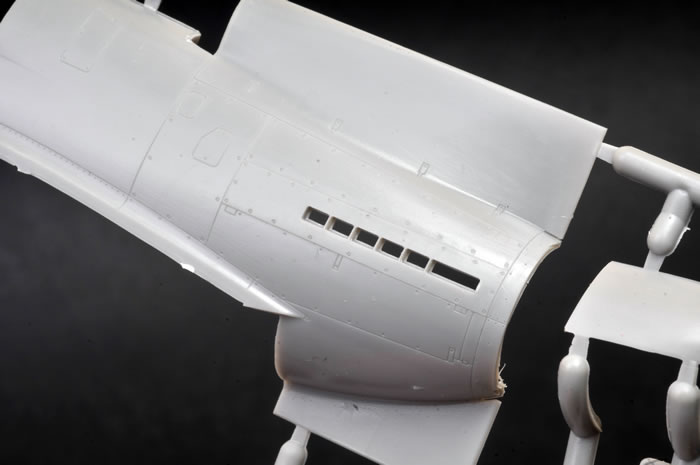
Construction commences in the cockpit and this area is very well fitted out with a combination of plastic and photo-etched parts.
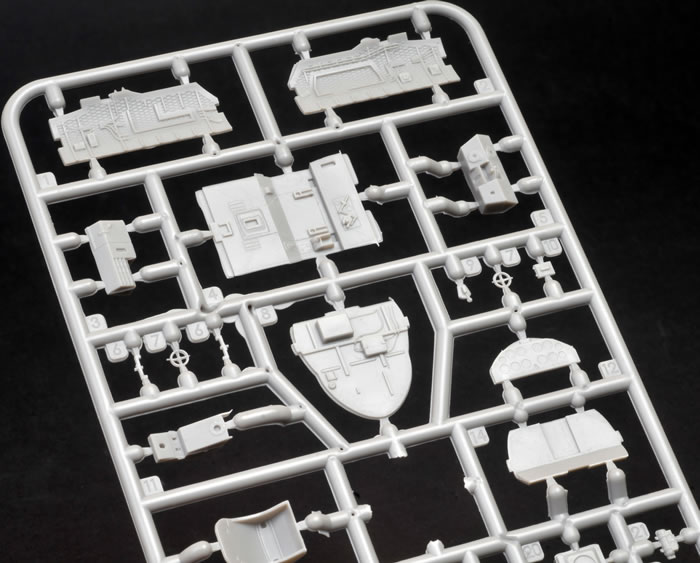
Two options are offered for the instrument panel - a photo-etched face with decal dials behind, or a decal overlay for a plastic panel.
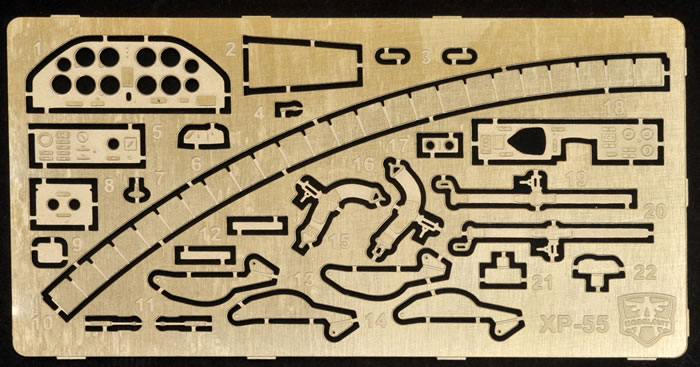
Similarly, port and starboard side consoles are provided as either photo-etched parts or decals on a flat plastic base.
The cockpit sidewalls are depicted with realistic fine quilted lining.
The swept wings are supplied as a full-span lower section and separate upper halves.
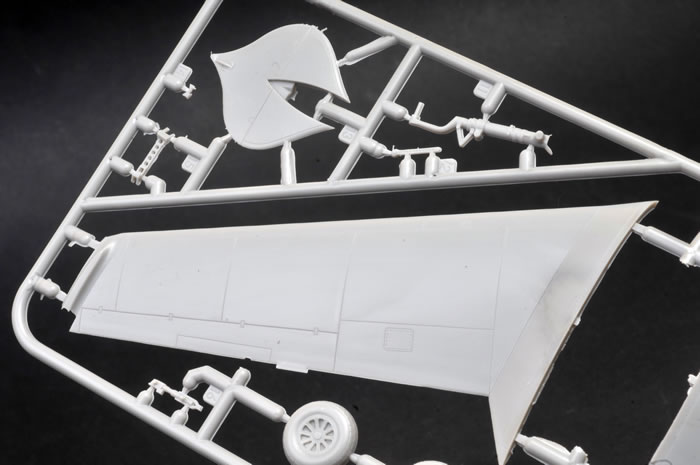
The main wheel wells are fitted between the upper and lower sing sections. They feature nice structural detail.
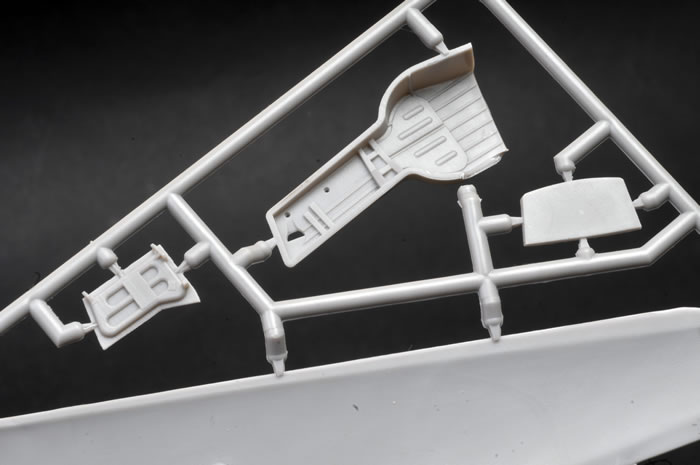
Control surfaces are all moulded in neutral / retracted positions. Finlets and canards are separate parts.
A photo-etched crescent is provided for the cowling flaps at the engine outlet.
The clear parts are very thin and clear. Two separate canopies are supplied - one open and one closed. The open canopy includes two separate panels that will be glued folded on the finished model. Navigation and other lights are offered on the clear sprue too.

The self-adhesive masking sheet is a nice touch, and even moreso as it includes masks for both the inside and outside of the canopy.
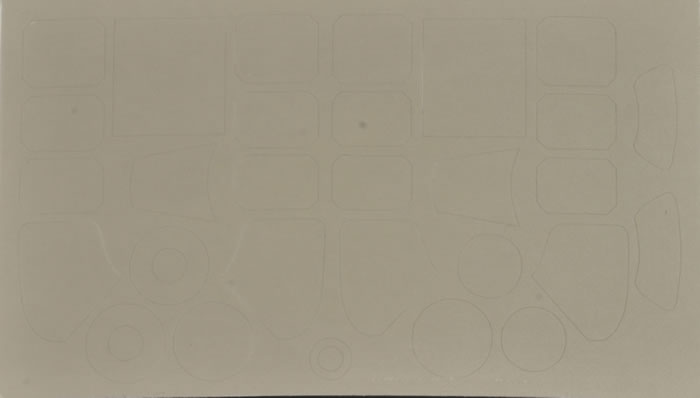
I probably won't use the inside masks for the main canopy part, but I certainly will for the two folding panels.
Marking Options
Markings are provided for second and third prototype XP-55s.
Both aircraft are finished in standard USAAC Olive Drab upper surfaces and Neutral Grey below.
The decals are presented on a small sheet. Instrument panel and side console decals are provided, as are stencil markings.
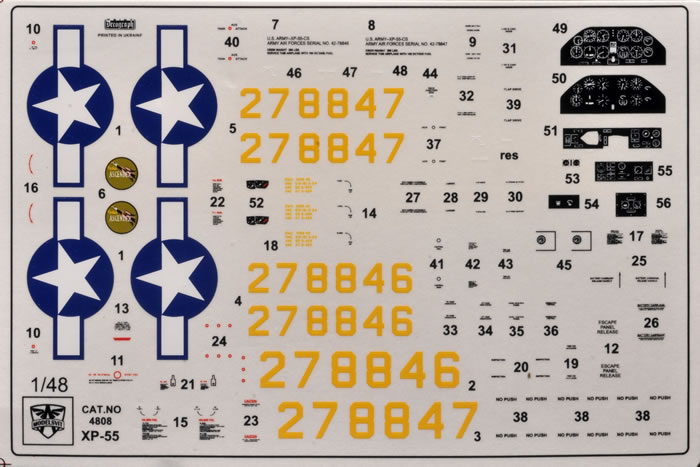
The decals themselves are printed in register with good looking colours and a satin finish.
Modelsvit has delivered an impressively detailed kit of this very interesting and unusual subject.
With care in preparation and test-fitting, this model should be within the skill range of the average modeller.
Thanks to Modelsvit via Creative Models Australia for the sample
Review Text Copyright © 2019 by Brett Green
Page Created 29 April, 2019
Last updated
30 April, 2019
Back to HyperScale Main Page
Back to Reviews Page |
